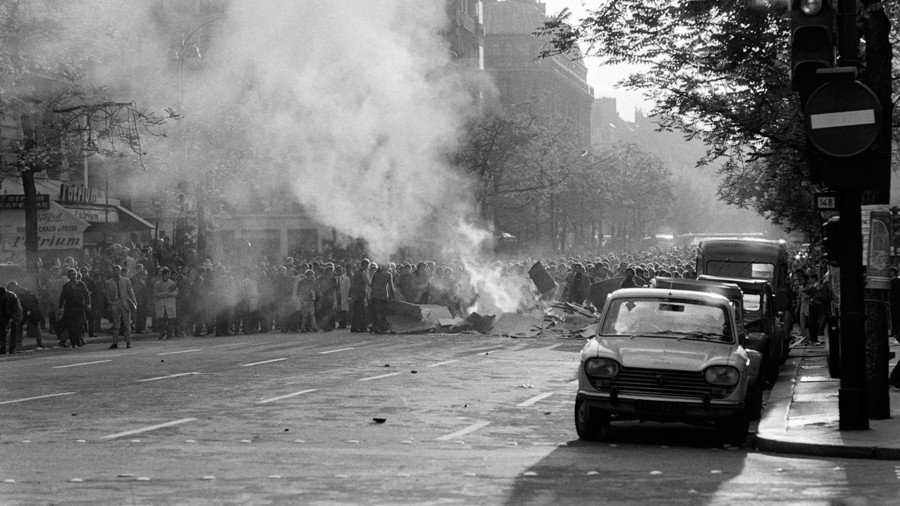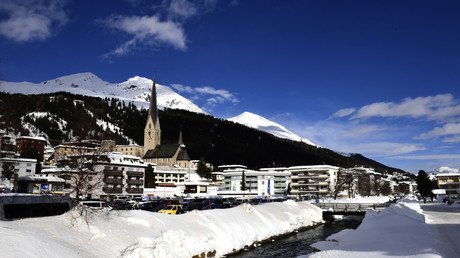Legacy of 1968 protests: How a leftist revolution helped capitalists win

The May 1968 protest movement changed the western world. Now, almost 50 years later, it’s clear a supposedly leftist movement ultimately helped capitalism to dominate.
Although an immense abyss separates the social revolution of the 1960s from today’s protests, we are witnessing a similar re-appropriation of the energy of revolt by the capitalist system.
One of the well-known graffiti slogans on the Paris walls of ‘68 was: “structures do not walk on the streets,” meaning one couldn’t explain the large student and workers demonstrations of ’68 in the terms of structuralism. And this is why some historians even posit 1968 as a date that separates structuralism from post-structuralism which was, so the story goes, much more dynamic and prone to active political interventions.
The French psychoanalyst Jacques Lacan’s answer was that this, precisely, is what happened in 1968: structures DID descend onto the streets – the visible explosive events were ultimately the result of a structural shift in the basic social and symbolic texture of modern Europe.
Light My Fire
The consequences of the ‘68 explosion prove him right. What effectively happened in the aftermath of the ‘68 was the rise of a new figure of the “spirit of capitalism.” Indeed, the system abandoned the Fordist centralized structure of the production process and developed a network-based form of organization founded on employee initiative and autonomy in the workplace.
Thus, instead of hierarchical-centralized chains of command, we now have networks with a multitude of participants, organizing work in the form of teams or projects. Which are intent on customer satisfaction, and a general mobilization of workers thanks to their leaders’ vision. This new “spirit of capitalism” triumphantly recuperated the egalitarian and anti-hierarchical rhetoric of 1968, presenting itself as a successful libertarian revolt against the oppressive social organizations of corporate capitalism AND “really-existing” socialism.
The two phases of this new “cultural capitalism” are clearly discernible in the stylistic changes within advertising. In the 1980s and 1990s, it was the direct reference to personal authenticity or the quality of experience that predominated, while later, one can note more and more the mobilization of socio-ideological motifs (such as ecology and social solidarity). In fact, the experience referred to is the experience of being part of a larger collective movement, of caring for nature and the welfare of the ill, poor and deprived, and of doing something for them.
Helping Hands?
For instance, here is a case of this “ethical capitalism” brought to the extreme: Toms Shoes, a company founded in 2006 on a premise: with every pair you purchase, TOMS will give a pair of new shoes to a child in need. “One for One.” Using the purchasing power of individuals to benefit the greater good is what we’re all about.
Because among the planet’s 7.6 billion people, four billion live in conditions inconceivable to many at the top of the tree. But now the sin of consumerism (buying a new pair of shoes) can be atoned for and thereby erased by the awareness that one of those who really needs shoes received another pair free of charge. Meaning the very act of participating in consumerist activities is simultaneously presented as participating in the struggle against the evils ultimately caused by capitalist consumerism.
In a similar way, many other aspects of ‘68 were successfully integrated into the hegemonic capitalist ideology and are today mobilized not only by liberals, but also by contemporary Right, in their struggle against any form of “socialism.” For example, “freedom of choice” is used as an argument for the benefits of precarious work. So, forget the anxieties of not being sure how you will survive the next few years and focus instead on the fact that you gain the freedom to “reinvent” yourself again and again, to avoid being stuck to the same monotonous work.
Utter Upheaval
The 1968 protest focused its struggle against (what were perceived as) the three pillars of capitalism: factory, school and family. As a result, each domain was submitted to post-industrial transformation. Leading to factory-work becoming more and more outsourced or, in the developed world, reorganized along the post-Fordist non-hierarchical interactive team-work. Meanwhile, permanent flexible privatized education is more and more replacing universal public education and multiple forms of flexible sexual arrangements are replacing the traditional family.
At the same time, the Left lost in its very victory: the direct enemy was defeated, but replaced by a new form of even more direct capitalist domination. In “postmodern” capitalism, the market is invading new spheres which were hitherto considered the privileged domain of the state, from education to prisons and security.
When “immaterial work” (like education) is celebrated as the labor which directly produces social relations, one should not forget what this means within a commodity-economy. That new domains, hitherto excluded from the market, are now commodified. So, when in trouble, we no longer talk to a friend but pay a psychiatrist or councilor to take care of the problem. And instead of parents, paid baby-sitters and educators take care of children.
Heavy Burden
One should, of course, not forget the real achievements of ‘68. The movement opened up a radical change in how we treat women’s rights, homosexuality and racism. After the glorious 60s, we simply cannot engage in public racism and homophobia the way we still could in the 1950s. Thus, ‘68 was not a single event but an ambiguous one in which different political tendencies were combined: this is why it also remained a thorn in the heel of many conservatives.
Nicholas Sarkozy admitted it when he said in his electoral campaign in 2007 that his great task was to make France finally get over ‘68. One should, of course, not miss the irony of this remark: the fact that Sarkozy, with his clownish outbursts and marriage to Carla Bruni, can be the French President is in itself one of the outcomes of the changes in customs brought about by May ‘68.
So we have the legacy of “their” May ‘68 and “our” May ‘68. In today’s predominant collective memory, “our” basic idea of the May demonstrations in Paris and the link between student protests and worker’s strikes, is forgotten. The true legacy of ‘68 resides in its rejection of the liberal-capitalist system, in a NO to the totality of it best encapsulated in the formula: Soyons realistes, demandons l’impossible!
The true utopia is the belief that the existing global system can reproduce itself indefinitely and that the only way to be truly “realist” is to endorse what, within the coordinates of this system, cannot but appear as impossible. The fidelity to May ‘68 is thus best expressed by the question: how are we to prepare for this radical change and to lay the foundations for it?
[Several sections of this article have been excerpted from previous publications by Slavoj Žižek.]
The statements, views and opinions expressed in this column are solely those of the author and do not necessarily represent those of RT.


















